Recycling: Why is it so confusing?
- Published
- comments
Why is recycling so complicated?
Working out how to deal with the waste produced by everyday life has become increasingly important, but with different rules in different areas it can be hard to know what you can recycle - and how. Here we answer some of the questions you have asked about recycling in Scotland.
This article was inspired by questions sent in by readers of the BBC website.
Why are there so many different recycling rules?
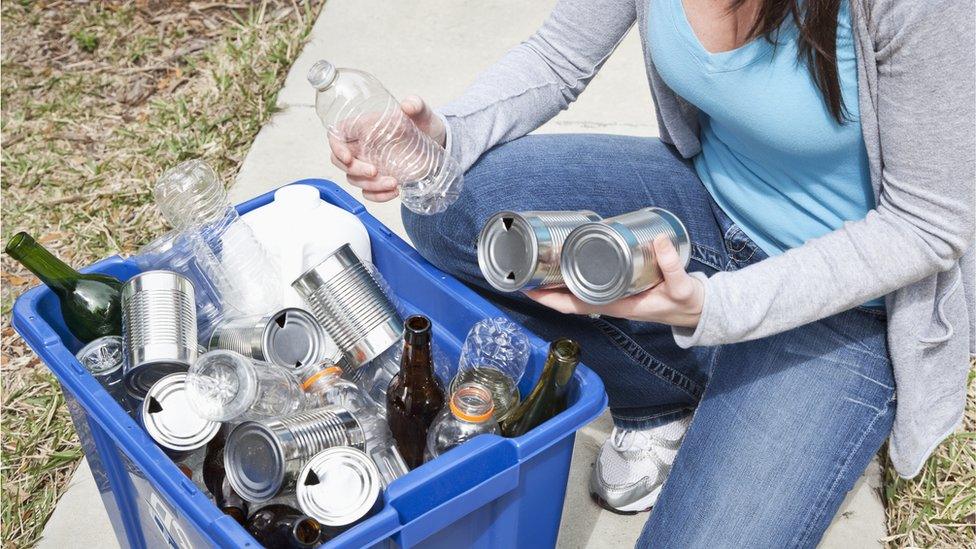
Each of the 32 councils in Scotland has their own rules around what can and cannot be recycled, what bins different types of waste should be put in - and even the number and colour of bins that are provided.
This is because of differences in what each council's Material Recovery Facility (MRF) is able to sort through, and it can make things a bit confusing if you're visiting another part of the country.
We looked at the five councils that recycled the highest percentage of household waste last year - East Renfrewshire, West Lothian, Clackmannanshire, Moray and Inverclyde - and found big differences between what could and couldn't be recycled at the kerbside.
In some areas, for example, you can leave glass at the side of the road - but you can't in West Lothian or Inverclyde which instead ask residents to take their empty bottles to a glass recycling point.
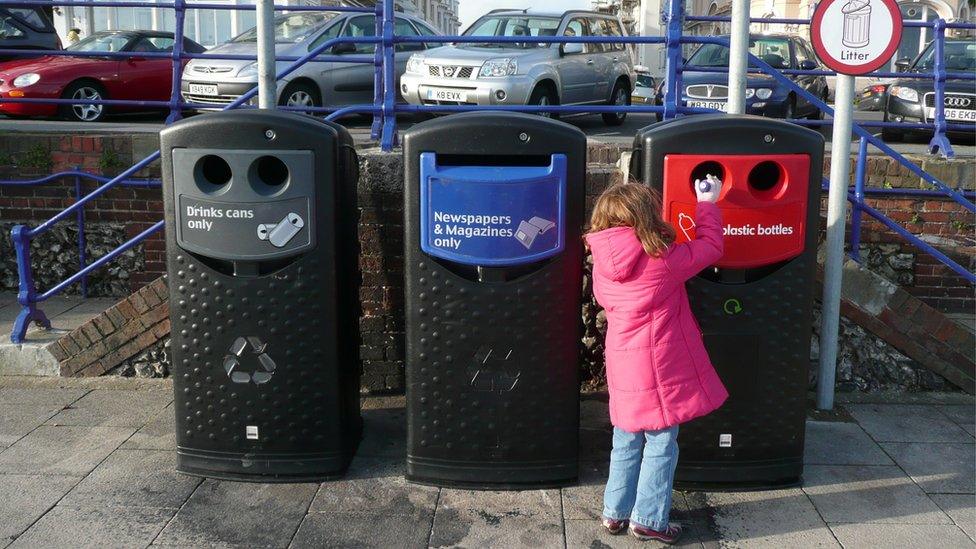
However, West Lothian is one of the few councils that accepts plastic carrier bags, so long as they are clean.
Clackmannanshire allows people to recycle batteries and textiles at the kerbside, while in Moray residents are able to recycle aerosol cans.
To make things even more confusing, some local authorities have different rules depending on which part of the council area you live in.
Argyll and Bute Council has the most complex system, with five different sets of rules - largely because of the geography of the region, which has 23 inhabited islands and covers the second-largest area of any Scottish council
Residents of mainland areas such as Helensburgh have the simplest system, with paper, cardboard, cans and plastic all going into the same blue bin - but on Bute people put paper and cardboard in a blue bin but plastics and cans in separate recycling bags.
Meanwhile, islanders on Coll separate their recycling into three different bags: paper, tins and cans, and plastic.
The local authority says these different local arrangements are needed to ensure a consistent level of service across the council area.
You can find out about your local recycling services here, external.
What happens if I put something in the wrong bin?
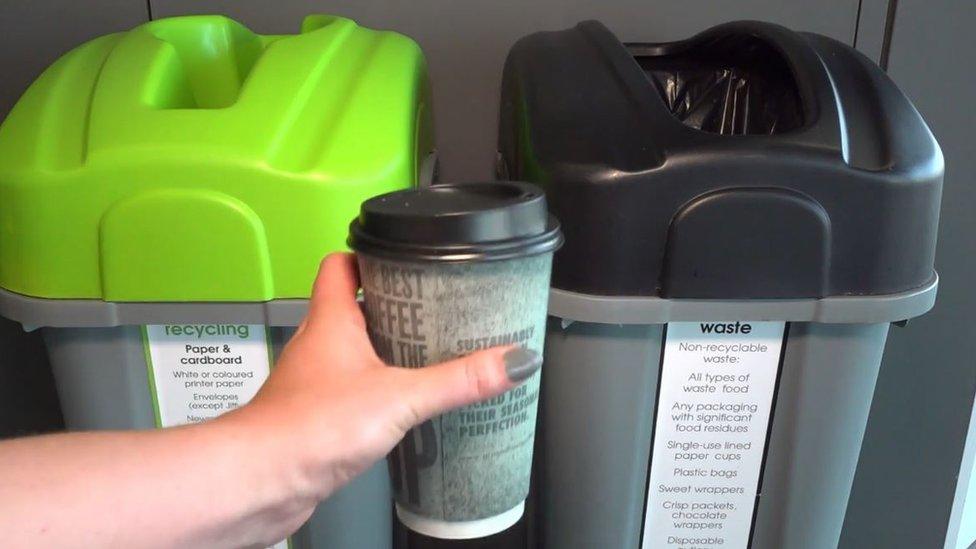
Your recycling will be checked for contamination before it's taken away. Contamination includes stuff that has been put in the wrong bin or which cannot be recycled, as well as items that have been put in plastic bags or which could be dangerous to staff who sort the recycling by hand.
Heavy amounts of contamination can cause the entire vehicle load to be rejected for recycling and sent to landfill instead.
Contaminated items will often be left behind in the recycling bin - or, in cases where there is a lot of contamination, the bin could be left unemptied.
Sometimes it can be difficult to spot contamination by eye, meaning a certain amount of contaminated waste will be collected from the kerbside - although this can often be removed during the sorting process at the MRF.
The good news is that the vast majority of stuff you leave on your kerbside, put into a communal recycling bin or take to your local civic amenity site is actually turned into something else.
According to environment agency Sepa, only 57,452 of the 706,613 tonnes of waste that was sent to MRFs or reprocessing facilities in 2017 was rejected - meaning about 92% could be recycled.
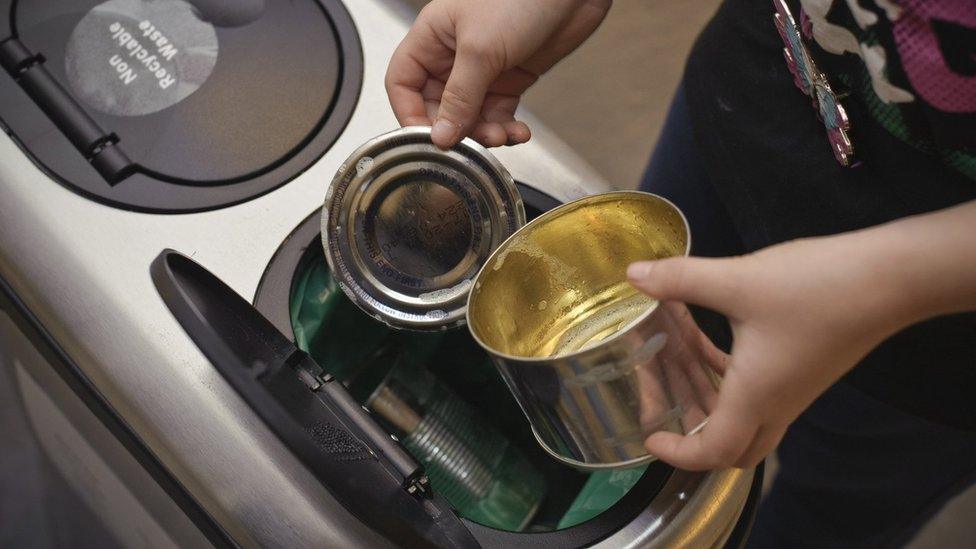
Do I really need to wash out my tins?
Yes, because food tins and packaging that are heavily contaminated with food make the recycling process much less efficient - so it really is important to ensure everything that goes into your bins is as clean as possible.
Cardboard pizza boxes should never go into your recycling because the grease has spoiled the fibres too much.
Plastic windows on paper envelopes are not usually a problem because paper mills can often remove them during the manufacturing process.
But padded envelopes are often not accepted for recycling because they are made of a mixture of paper, plastic and other filler materials.
Why is it so important to recycle food waste?
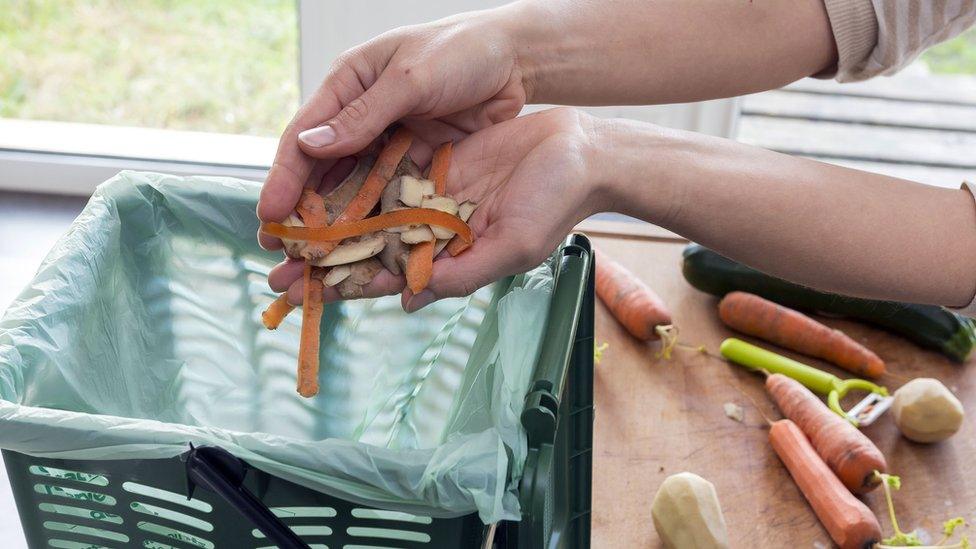
Food that is taken to landfill sites isn't exposed to enough oxygen to allow it to biodegrade naturally, so instead it rots and decays - which releases methane into the air.
Methane is said to be much more harmful to the planet than carbon dioxide, and food waste is one of the main factors behind rising greenhouse gas levels.
Ensuring your unused food is recycled allows the gases to be captured and converted into green energy and natural fertilisers.
What does Not Currently Recycled mean?
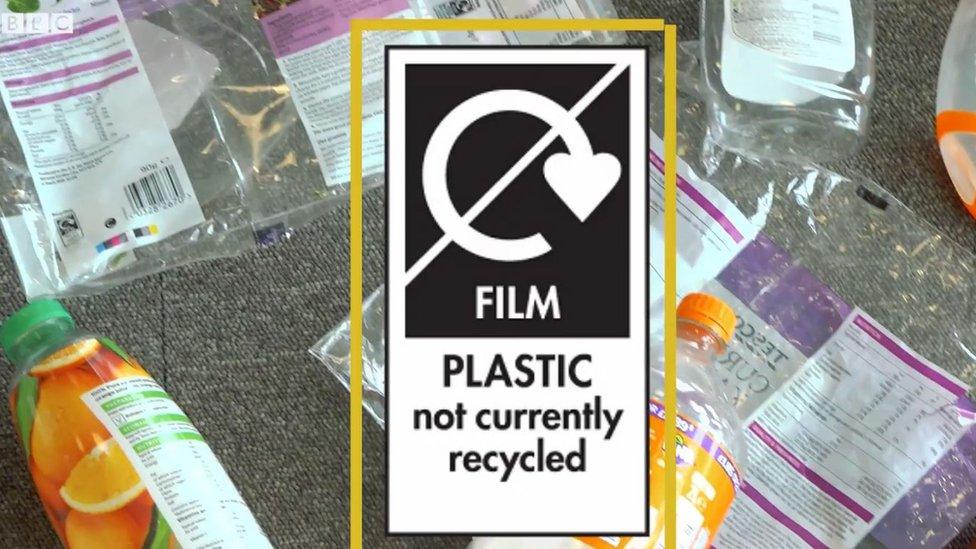
This symbol often appears on packaging - but confusingly, it does not necessarily mean it cannot be recycled.
Instead, it means that fewer than 20% of local authorities cannot recycle that particular packaging, so it is worth checking whether your council can, or if there are any alternatives.
Technological advances are being made in the waste business, so some items that were not previously recyclable now are.
Crisp packets are often not accepted by councils because they are made from metallised plastic film.
But recycling firm Terracycle, for example, is able to recycle crisp and confectionary packets and wrapping if they are dropped off at a participating location.
These are usually in schools but also at leisure centres, shops and even some home addresses.
What about coffee cups?
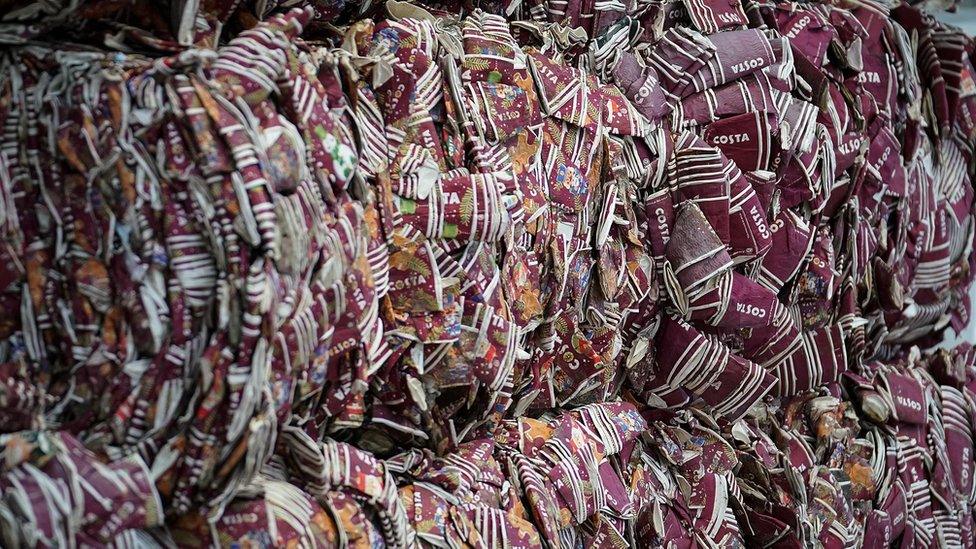
The reason so many coffee cups are single-use is because they are made from mixing together paper and plastic.
The materials are difficult to separate after they have been combined - there are currently only a small number of specialist plants in the UK able to process them.
Some coffee chains are recycling cups in store so it might be worth checking whether you should return it to them - and others are already starting to use fully-compostable takeaway cups.
What is my recycling turned into anyway?
Everyday items such as glass bottles and jars are often back on the shelves just weeks after being recycled.
This closed-loop recycling - where an object is recycled into the same thing over and over again - is the most efficient form of recycling.
But much of the stuff you throw into your recycling bin ends up being transformed into something completely different.
Plastic bottles can be used to make anything from bin liners to fleece jackets and home insulation.
Food tins can become car or bridge parts, cardboard juice cartons can become plasterboard - and old trainers have been used to make new running tracks.
What about stuff that can't be recycled?
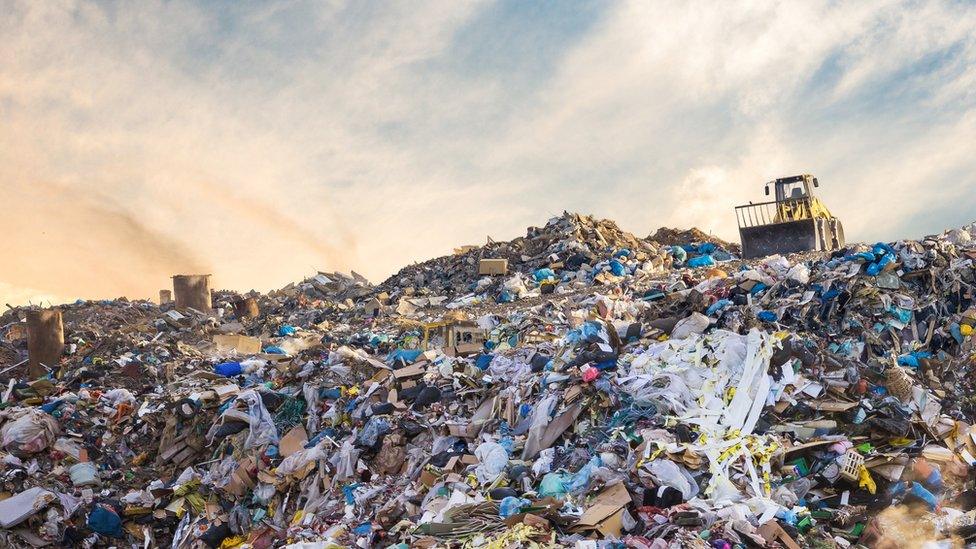
Non-recyclable waste will, for the most part, end up at a landfill site but there are sometimes other options.
This includes incineration, which can be used to create energy from waste - or mechanical biological and heat treatment, which break down waste using microbes or heat.
Some of Scotland's waste is exported, with the majority of this (about 865,000 tonnes in 2017) going to other parts of the UK and the remainder being shipped to Europe or even further afield.
Other countries buy our waste either to use it to generate energy or to recycle, while China uses our plastic to create fuel oil.
And before you throw out non-recyclable items, it's worth considering whether they could be sold for someone else to use, or donated to charity.
Do you have any other questions around recycling - or any other topic - in Scotland that you'd like us to investigate?
Use the tool below and we could be in touch.
If you are reading this page on the BBC News app, you will need to visit the mobile version of the BBC website to submit your question on this topic.